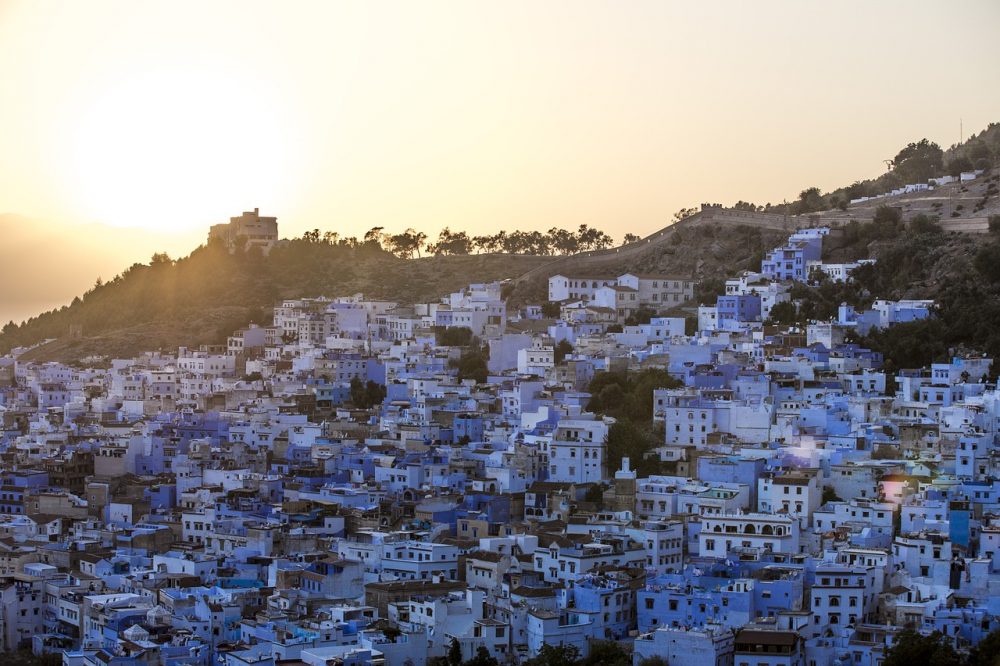As a country with 100 million annual beach visitors, nine delicate UNESCO world heritage sites and aspirations to double tourism, Morocco faces sustainable tourism challenges. These include rising seas levels, extreme weather events and a desire to improve the quality of life for its lower income population. The collision between such difference forces of Climate Change, population growth and economic development was the backdrop for the Envirocities 2016 Coastal Cities Conference* held in Rabat 24 and 25 October.
These challenges highlighted the need for capacity building, community involvement and integration of government legislation. It also clearly put into perspective the difficulties of applying an Integrated Coastal Zone Management system when the vision tourism is one of massification of coastal development to replicate other destinations (e.g. Miami) rather than developing a more sustainable approach. On the one hand you have the push for action of Climate Change and on the other the pull for economic growth and job creation.
The Moroccan Minister for the Environment, Water and Mining, Dr. Hakima El Haite, told the audience of over 300 local government officials and mayors from across Morocco, that “climate change is the biggest challenge mankind has ever faced” and then went on to say this in her unscripted speech:
“Do not be surprised that tomorrow you will hear that 1 million people will die through flooding or coastal storms. Everything has to change. We all have to change. The world of tomorrow will not be like the world of today. Following the COP meeting in Marrakech ** the Moroccan government will also be hearing from all the mayors what they plan to do to reduce emissions in their communities from transport to waste.” The audience gave loud applause which echoed their earlier push for action during question time during the course of the conference. Everyone appeared to agree and wished to stimulate progressive change from this developing nation at the top of Africa. What is apparent is that they need economic support to make this change. They have the will, but what is the vision.
What action beyond visitation goals should be taken to create sustainable tourism rather mass tourism is unclear and perhaps ‘unseen’. As we move to the official UN International Year of Sustainable Tourism for Development, 2017 requires an integration of Moroccan ministries’ Climate Change policy to enable local government and communities to implement adaptation measures which provide economic opportunities for communities from tourism. To guide sustainable tourism development a plan is required to use the resources at hand and in a scale that does not make the urban and environmental mistakes of other coastal destinations and so exacerbate Climate Change.
Morocco has supported sustainable tourism initiatives for seven years (e.g. awards programmes) but what integrated solutions actually might look like at a destination level though is more complex for any country. As guidance I strongly advocated that they reflect on their cultural heritage and religion to guide their way forward. While signature nations of COP22 will commit to emissions and temperature targets, how we achieve them must reflect our different geography, climates and cultures, just as these factors have created such a richly diverse world. Reflecting on past ways of life can show us the way forward; and such new approaches ought to be unique to where we live. Likewise integrating sustainable supply chains must also be scaled to what the fragile earth can feed and should be a key mediating factor in development planning, particularly for energy and water resources. This of course is easier said than done. The scale of the challenges should in no way be underestimated, particularly if one communicates an approach that appears to contradict the stereotypical first world nation economic model which, until now, most appear to still have full confidence in.
In summary the vision might include:
a) quality nor quantity approach to visitor numbers and spread visitation across the year
b) the scattering of tourism accommodation across the country rather than dense enclaves
c) linking renewable water and energy to these low density tourism sites
d) constructing accommodation which reflects the cultural heritage and traditional building design to moderate climate conditions
e) efficient public transport linkage between locations
f) involve visitors in responsible food, water, energy and waste consumption levels that respect the land and people
g) furnish accommodation with traditional arts and crafts and link accommodation with retailers/sellers
h) invest in water efficient agriculture and marine fish farms
i) train community guides and promote responsible tourism opportunities of authentic community experiences
j) charge international visitors entry to heritage sites with funds used for conservation and local economic development
*The Envirocities Conference, organised and supported by the Environmental Centre for Arab Towns, was a thought provoking two day event which brought together climate, ocean and biological scientists with valuable examples from the Arabian Gulf (Dr Marouane Temimi) and Red Sea (Dr Salim Al-Moghrabi), together with insights on how Morocco could protect its coastal marine waters and benefit from fisheries for local economies (Eng. Ayet Lahsan).
**UN Framework Convention on Climate Change – Conference of Partners – progressing from Copenhagen and Paris.
This article was originally published on Chris Warren Online written by Griffith Institute for Tourism PhD Candidate, Christopher Warren.
